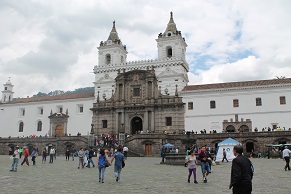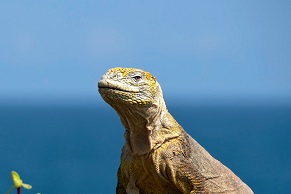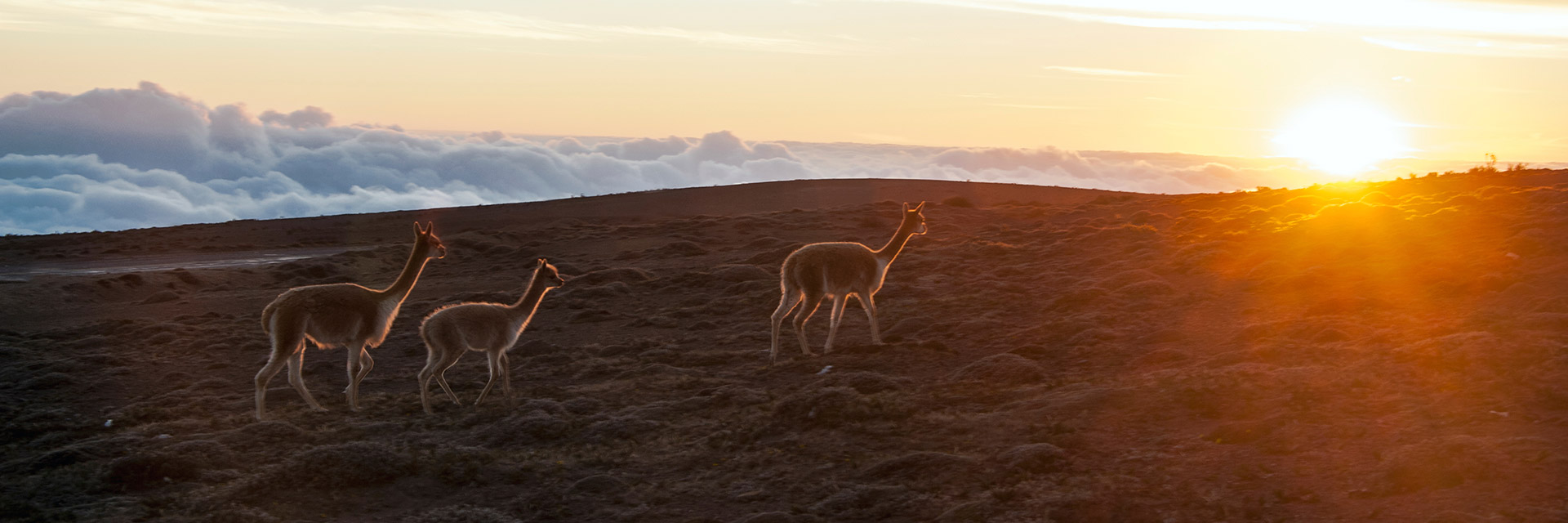Learn Spanish in Ecuador
A small country that’s big in 15 million ways? Colorful, social and serene, Ecuador boasts majestic colonial cities, 15 million ethnically diverse citizens, rare animal species, the Galapagos Islands, and the mighty, mighty Amazon – just to name a few of the reasons why you should study Spanish in Ecuador. Discover more!
Ecuador packs a punch!
Looking to study Spanish in Ecuador? We’ve got some hard and fast facts that’ll have you packing your bags in no time.

- First – In 1978 Ecuador’s enchanting capital city, Quito, was named the first ever UNESCO World Heritage site along with the Polish city, Kraków. And it’s not hard to see why! Among other fascinating sites in Quito, you’ll find 40 colonial churches, 17 airy plazas and 16 mysterious convents.
- Largest – Megadiverse, they say! Ecuador is home to stunning flora and fauna, including the largest living rodent (the Capybara), the largest otter species (the Giant Otter), the largest freshwater dolphin (Amazon River Dolphin), and last but certainly not least, the world famous Galapagos Tortoise (and yes! It’s the largest tortoise in the world).
- First – In 2008 the Ecuadorian government passed legislation to recognize the Rights of Nature. With the inclusion of its Buen Vivir (Good Living) policies in the nation’s constitution, Ecuador became the first country in the world to grant constitutional rights to the environment. And with good reason! The country’s biodiversity is astonishing. Learn more about it below!
- Largest – Ecuadorians know their bananas! Aside from traditional dishes and day-to-day consumption, bananas play an important role in Ecuador’s economy. The country is the world’s largest exporter of bananas, with almost 30% of the world’s banana exports originating in Ecuador!
- First – You’ll find Ecuador at the beginning, middle and end of every good history book on Latin America! In fact, the nation’s capital, Quito, was the site of the Primer Grito de Independencia Hispanoamericano, a junta in 1809 that marked the first in a series of events leading to the emancipation of Latin America from Spanish rule.
Megadiverse Ecuador

Conservation International recognizes Ecuador as one of the world’s 17 most biodiverse countries. It also happens to be one of the smallest! Take a look at what’s waiting for you:
- Pacific Coast – The main ingredient in many scrumptious local dishes in Ecuador is a piece of the Pacific Coast! Home to quaint fishing villages and superb seafood, this part of the country will lure you in with its mangrove forests, crystal waters, endless sandy beaches, and much more!
- Sierra – The Andes Mountains cut through Ecuador like a knife through butter – right down the middle of the country, in fact! Boasting year-round snowy peaks, active volcanoes, cloud forests, flower farms and the capital Quito, we won’t blame you if you think it’s too good to be true!
- Oriente – Over the nooks and rondures of the Andes, you’ll roll straight into the Amazon Basin. Known locally as El Oriente, this region of Ecuador is home to some of the country’s many indigenous communities, not to mention the famous biodiversity you’ll hear so much about when you study Spanish in the Amazon!
- Galapagos Islands – Once upon a time it was Charles Darwin on the Beagle, today it’ll be you on a domestic flight bound West! The Galapagos Islands lie just over 600 miles from the Ecuadorian mainland, welcoming thousands of tourists year round to its serene tortoise-packed beaches.
Look closer!

Scattered about the jungles, the highlands, the coast and the islands, are 15 million friendly locals waiting today to help you learn Spanish in Ecuador. Time to get to know them a little better?
- People – Once home of the powerful Inca Empire. Once a hideout for escaped African slaves. Once the ideological battleground of the Spanish Inquisition. Throughout its topsy-turvy history, Ecuador has been a melting pot of cultures, values and ethnicities. Over 70% of the population here is mestizo (mixed race), another 7% is Afro-Ecuadorian, and don’t forget Amerindian communities like the Shuars, or the country’s tiny Asian minority and a few Jewish families spotted here and there!
- Religion – Statistically and culturally, Ecuador is one of the most Catholic nations on earth – around 80% of the population to be exact! But you’ll probably be able to figure this out for yourself. Each year Ecuadorians celebrate Carnival (February), Good Friday, Holy Saturday and Easter Sunday, plus All Soul’s Day (November 2) and Christmas (December 25).
- Food – Aside from those drinks and dishes that Ecuador shares with its neighbors like aguardiente (sugarcane-based spirit), churrasco (barbecue), and ceviche – to name a few – the country also boasts a jam-packed offering of its very own flavorsome delights. Local dishes tend to include fish, beans, rice, plantains, and potato, as well as yuca (cassava) – many items of which are native to areas in and around Ecuador.
Speak like a local
Good news! Today’s forecast for Ecuadorian Spanish is clear, calm and easy. That’s right, Ecuador is one of the best places on earth to understand Spanish. To top it off, the people here are friendly and very forgiving of foreigners when it comes to practicing the language. Take a look at some interesting points to help you best learn Spanish in Ecuador:
- Huevos – Translated to English, you get eggs. Yep! Eggs play an important role in language use in Ecuador. So if you hear someone say “a precio de huevo” (the price of an egg), you’ll know that what he or she is really saying is “Wow! That’s cheap!” And if you’re called a “cabeza de huevo”, you’ll know to check for bald spots on your head.
- Ceceo – This linguistic term refers to a type of pronunciation in Spanish that’s generally only found in Spain…. and, interestingly enough, Ecuador! In coastal regions of the country you’ll hear people pronouncing the letters ‘s’ and ‘z’ like /θ/ (‘th’, as in the English word ‘thanks’). If the ‘s’ or the ‘z’ falls at the end of the word, it might not even be pronounced at all.
- Voseo – Follow the Andes right through South America and you’ll discover a whole lot of people speaking Spanish differently! Voseo is a concept you won’t learn in the average Spanish textbook. It refers to the use of the second person pronoun vos instead of tú. What does this mean for you? If you’re hanging out in the Andes region of Ecuador, enjoy yourself! With vos you have no irregular verbs to deal with.
- Quicha – One of the native languages of Ecuador, Quicha, is all through Ecuadorian Spanish! To give you an idea, while after a big night out in other South American countries you’d have a resaca (hangover), in Ecuador you’ll be suffering with a chuchaqui. If it’s really bad, you might choose to yell ayayay, a Quicha exclamation for intense pain. Our advice? Call one of your ñaños (friends) to accompany you to take in some fresh air in the cobblestone streets near our Spanish school in Quito.





 (10/02/2020)
(10/02/2020) 









